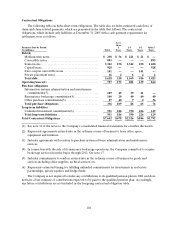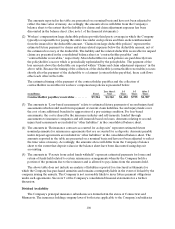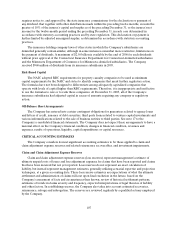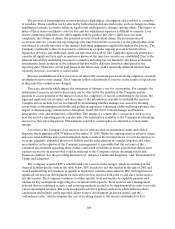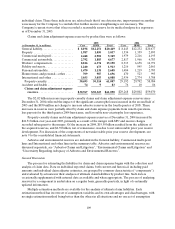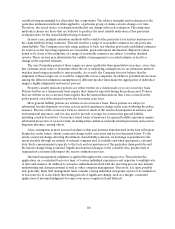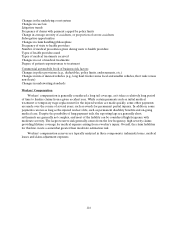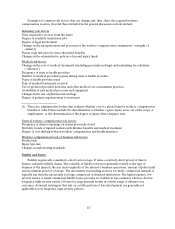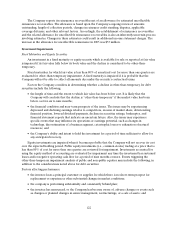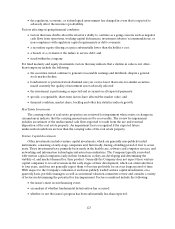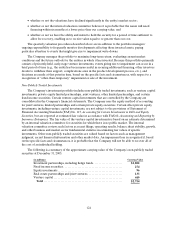Travelers 2005 Annual Report Download - page 126
Download and view the complete annual report
Please find page 126 of the 2005 Travelers annual report below. You can navigate through the pages in the report by either clicking on the pages listed below, or by using the keyword search tool below to find specific information within the annual report.
114
foreseeable and intended to be covered at the time the contracts were written (i.e., coverage dispute
potential), and the potential for mass claim actions. Claims with longer reporting lags result in greater
inherent risk. This is especially true for alleged claims with a latency feature, particularly where courts have
ruled that coverage is spread over multiple policy years, hence involving multiple defendants(and their
insurers and reinsurers) and multiple policies (thereby increasing the potential dollars involved and the
underlying settlement complexity). Claims with long latencies also increase the potential recognition lag,
i.e., the lag between writing a type of policy in a certainmarket and the recognition that such policies have
potential mass tort and/or latent claim exposure.
The amount of reserve estimate uncertainty also varies significantly by component for the General
Liability product line. The components in this product line with the longest latency, longest reporting lags,
largest potential dollars involved, and greatest claim settlement complexity are Asbestos and
Environmental. Components that include latency, reporting lag and/or complexity issues, but to a
materially lesser extent than Asbestos and Environmental, include construction defect, medical
malpractice, and other mass tort actions. Many components of General Liability are not subject to material
latency or claim complexity risks and hence have materially less uncertainty than the previously mentioned
components. In general, policies providing coverage with shorter reporting lags, fewer parties involved in
settlement negotiations, only one policy potentially triggered per claim, fewer potential settlement dollars,
reasonably foreseeable (and stable) potential hazards/claims and no mass tort potential result in much less
reserve estimate uncertainty than policies without those characteristics.
Examples of common risk factors that can change and, thus, affect the required general liability
reserves (beyond those included in the general discussion section)include:
General liability risk factors
Changes in claim handlingphilosophies
Changes in policy provisions or court interpretation of such provision
New theories of liability
Trends in jury awards
Changes in the propensity to sue, in general with specificity to particular issues
Changes in statutes of limitations
Changes in the underlying court system
Distortions from losses resulting from large single accounts or single issues
Changes in tort law
Shifts in law suit mix between federal and state courts
Changes in claim adjuster office structure (causing distortions in the data)
Changes in settlement patterns (e.g., medical malpractice)
General liability book of business risk factors
Changes in policy provisions (e.g., deductibles, policy limits, endorsements)
Changes in underwriting standards
Product mix (e.g., size of account, industries insured, jurisdiction mix)
Property
Property is generally considered a short tail line with a simpler and faster claim reporting and
adjustment process than liability coverages, and less uncertainty in the reserve setting process (except for
more complex business interruption claims). It is generally viewed as a moderate frequency, low to
moderate severity line, except for catastrophes and coverage related to large properties. The claim
reporting and settlement process for property coverage claim reserves is generally restricted to the insured
and the insurer. Overall, the claim liabilities for this line create a low estimation risk, except possibly for
catastrophes and business interruption claims.


